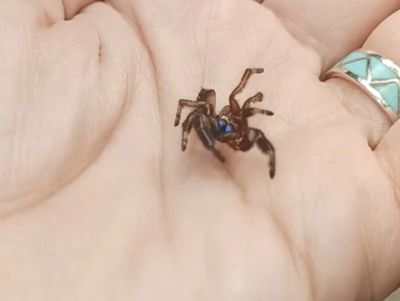The molting process is the shedding of your jumping spider's exoskeleton.
Your jumping spider has to complete molts in order to grow. The proper diet and environment is needed for a successful molt. Pre & Post molt can take days, but the actual act of shedding should take no longer than 30 or so minutes, shorter time frames being better. If you suspect your jumping spider is in premolt, do not interfere with their web hammocks as they will need these to safely complete their molt.
Jumping Spiders will begin to thicken their web hammocks prior to a molt. Their abdomen will start to plump and they will begin spending more and more time tucked away in their hammock. They may come out for a drink during this time, and even have a snack should one conveniently present itself. Most likely, though, they will avoid food all together.
It's important to mist as usual during the molting process. Jumping spiders need the humidity and hydration from the water droplets. Fruit flies are not a bother and can still be offered in small amounts, but it is best to avoid feeding mealworms and crickets during this time.
The time will come when the jumping spider actually sheds their exoskeleton. If the shed is taking longer than 30 minutes, or you notice your spider stuck emergency intervention may be needed. It is difficult to say exactly what care steps must be taken as each case is different. If you have adopted through Spoodville, please use the phone number on the care sheet included in your box to contact us ASAP. If you have a wild caught jumper or have adopted elsewhere, Facebook groups are a great place for immediate help.
Once your jumping spider has completed the actual shed, they will remain in the hammock to recuperate and harden their new exoskeleton. They may or may not kick out their old skin, it's really up to them. There is no need to clean it out.
They will venture out eventually for food and water. A nice, squishy meal like a waxworm or fly spike is perfect for a post molt meal. Make sure they have plenty to drink as well.
The older they get, the longer the molting process takes. Don't rush to be alarmed if they have been tucked away for a few weeks. You can check on them by shining a light on the web either from the front or behind and gently blowing or misting inside the enclosure. You will be able to see your jumping spider make the slightest movement and can rest assure they are okay.

